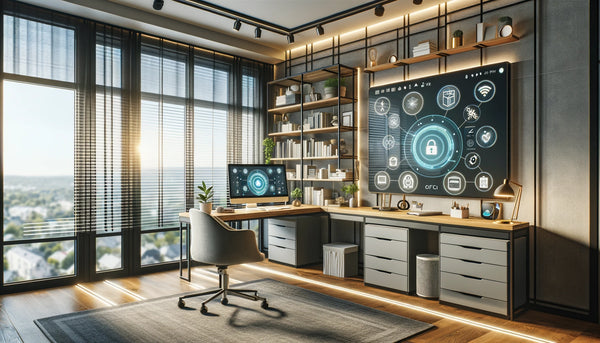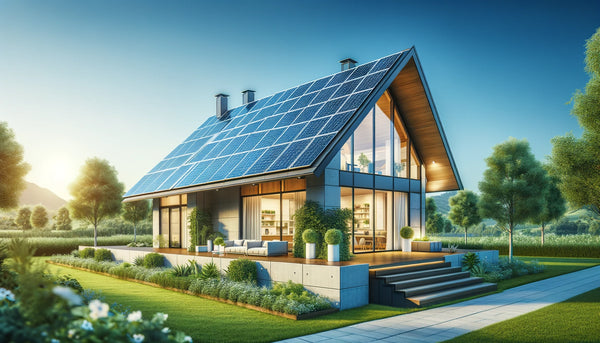In the face of climate change and increasing environmental concerns, individuals and households are increasingly turning their attention towards making their homes more energy-efficient and environmentally friendly. Energy efficiency upgrades not only help reduce carbon emissions and lessen environmental impact but also lead to cost savings in the long run. By implementing various strategies and technologies, homeowners can significantly decrease their energy consumption while improving the comfort and value of their homes. This comprehensive guide aims to provide homeowners with practical tips and insights on how to green their homes through energy efficiency upgrades.
Table Of Content
- Understanding Energy Efficiency
- Assessing Your Home's Energy Usage
- Improving Insulation and Air Sealing
- Upgrading Appliances and Lighting
- Optimizing Heating and Cooling Systems
- Harnessing Renewable Energy Sources
- Implementing Water Conservation Measures
- Incorporating Green Building Materials and Design Strategies
- Educating and Engaging Residents
- Conclusion
- FAQs

Understanding Energy Efficiency
Before diving into specific upgrades and strategies, it's essential to understand what energy efficiency entails and why it matters. Energy efficiency refers to using less energy to achieve the same or even better results. In the context of homes, it involves reducing energy waste by improving insulation, upgrading appliances and lighting, optimizing heating and cooling systems, and implementing renewable energy sources. Embracing energy efficiency not only lowers utility bills but also reduces reliance on fossil fuels, mitigating greenhouse gas emissions and combatting climate change. Moreover, energy-efficient homes tend to be more comfortable, healthier, and environmentally sustainable.
Assessing Your Home's Energy Usage
The first step towards greening your home is to assess its current energy usage and identify areas for improvement. Conducting a home energy audit can provide valuable insights into where energy is being wasted and which upgrades will yield the most significant benefits. Homeowners can opt for professional energy audits or utilize DIY methods such as inspecting insulation, checking for air leaks, and assessing the efficiency of appliances and HVAC systems. Understanding your home's energy profile enables you to prioritize upgrades and investments based on their potential impact and return on investment.
Improving Insulation and Air Sealing
One of the most effective ways to enhance energy efficiency is by improving insulation and air sealing. Proper insulation helps maintain consistent indoor temperatures by minimizing heat transfer through walls, floors, and ceilings. Adding insulation to attics, walls, and crawl spaces can significantly reduce heating and cooling costs while enhancing comfort. Additionally, sealing air leaks around windows, doors, and ductwork prevents conditioned air from escaping and outdoor air from infiltrating the home. Weather-stripping, caulking, and installing energy-efficient windows and doors are effective measures to minimize drafts and improve overall insulation.
Upgrading Appliances and Lighting
Household appliances and lighting fixtures account for a significant portion of energy consumption in most homes. Upgrading to energy-efficient appliances such as refrigerators, washing machines, dishwashers, and water heaters can lead to substantial energy savings over time. Look for products with ENERGY STAR certification, indicating superior energy efficiency compared to standard models. Similarly, replacing incandescent bulbs with energy-efficient LED or CFL bulbs can reduce lighting energy consumption by up to 75%. Smart lighting controls and sensors further optimize energy usage by adjusting lighting levels based on occupancy and natural light availability.

Optimizing Heating and Cooling Systems
Heating and cooling systems are major energy consumers, especially in regions with extreme temperatures. Optimizing these systems through regular maintenance and upgrades can significantly improve energy efficiency. Schedule professional HVAC maintenance to ensure that systems operate at peak performance, with clean filters and properly calibrated thermostats. Consider upgrading to high-efficiency furnaces, boilers, air conditioners, or heat pumps that utilize advanced technologies to minimize energy consumption. Programmable or smart thermostats allow homeowners to customize heating and cooling schedules based on their preferences and occupancy patterns, further reducing energy waste.
Harnessing Renewable Energy Sources
While reducing energy consumption is crucial, incorporating renewable energy sources can further enhance the sustainability of your home. Solar panels are a popular option for generating clean electricity from sunlight, reducing reliance on grid power and lowering utility bills. Depending on your location and roof orientation, installing solar panels can provide significant long-term savings and environmental benefits. Additionally, wind turbines, geothermal heat pumps, and micro-hydro systems offer alternative renewable energy solutions for homeowners seeking to reduce their carbon footprint and achieve energy independence. Evaluate the feasibility and cost-effectiveness of each option based on your location, energy needs, and budget.
Implementing Water Conservation Measures
In addition to energy efficiency upgrades, implementing water conservation measures can further enhance the sustainability of your home. Fixing leaks in plumbing fixtures and irrigation systems helps conserve water and reduce utility bills. Installing low-flow faucets, showerheads, and toilets can significantly decrease water usage without sacrificing performance. Greywater recycling systems capture and treat water from sinks, showers, and laundry for non-potable uses such as irrigation and toilet flushing, further reducing freshwater consumption. Rainwater harvesting systems collect and store rainwater for landscape irrigation, reducing reliance on municipal water supplies during dry periods.
Incorporating Green Building Materials and Design Strategies
When renovating or building a new home, incorporating green building materials and design strategies can significantly enhance energy efficiency and sustainability. Opt for materials with high recycled content, low embodied energy, and eco-friendly certifications such as LEED or Cradle to Cradle. Choose energy-efficient windows, doors, and roofing materials that provide superior insulation and durability. Design homes with passive solar principles in mind, maximizing natural light and heat gain while minimizing heat loss. Utilize sustainable landscaping practices such as native plantings, permeable paving, and efficient irrigation systems to reduce water usage and enhance biodiversity.
Educating and Engaging Residents
Lastly, fostering a culture of energy efficiency and sustainability within your household is essential for long-term success. Educate family members about the importance of energy conservation and involve them in decision-making processes regarding upgrades and behavior changes. Encourage energy-saving habits such as turning off lights when not in use, adjusting thermostat settings, and unplugging electronics when not in use. Monitor and track energy usage regularly to identify areas for improvement and celebrate achievements in reducing consumption. By fostering a sense of ownership and responsibility towards energy efficiency, households can collectively contribute to a greener and more sustainable future.

Conclusion
Greening your home through energy efficiency upgrades is a practical and impactful way to reduce environmental impact, lower utility bills, and enhance overall comfort and sustainability. By assessing your home's energy usage, prioritizing upgrades, and implementing a combination of strategies such as improving insulation, upgrading appliances, optimizing heating and cooling systems, harnessing renewable energy sources, and incorporating water conservation measures, homeowners can significantly decrease their carbon footprint and contribute to a more sustainable future. Moreover, fostering a culture of energy efficiency within households through education, engagement, and behavior changes ensures long-term success in achieving greener homes and communities. Embrace the opportunity to make a positive difference by greening your home today.
FAQs
Why are energy efficiency upgrades important?
Energy efficiency upgrades are important for reducing carbon emissions, combating climate change, enhancing comfort, and saving money on utility bills.
What are some common energy efficiency upgrades?
Common energy efficiency upgrades include improving insulation, upgrading appliances and lighting, optimizing heating and cooling systems, harnessing renewable energy sources, and incorporating water conservation measures.
How can homeowners assess their home's energy usage?
Homeowners can assess their home's energy usage through professional energy audits or DIY methods such as inspecting insulation, checking for air leaks, and evaluating the efficiency of appliances and HVAC systems.
What is the significance of incorporating renewable energy sources?
Incorporating renewable energy sources such as solar panels, wind turbines, and geothermal heat pumps can reduce reliance on fossil fuels, lower carbon emissions, and provide long-term savings on energy costs.
You May Also Like
- Energy Efficiency and Renewable Energy: A Dynamic Duo
- The Economic Case for Energy Efficiency
- The Importance of Energy Efficiency in Home Appliances
- Advancing Environmental Certifications and Strengthening Energy Efficiency
- Energy Efficiency: Why Is It Important?

